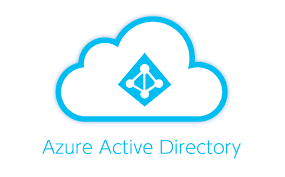Unveiling the Power of Azure Active Directory: A Comprehensive Guide
 Halliru Musa Halliru
Halliru Musa Halliru
Introduction: Azure Active Directory (AAD) stands as a cornerstone in Microsoft's cloud ecosystem, offering a robust identity and access management solution for businesses of all sizes. In this blog post, we will delve into the intricacies of Azure Active Directory, exploring its key features, benefits, and the crucial role it plays in securing and managing user identities within the Azure cloud environment.
Understanding Azure Active Directory: Azure Active Directory is Microsoft's cloud-based identity and access management service. It serves as the backbone for authentication and authorization, allowing organizations to securely manage and authenticate users. AAD facilitates single sign-on (SSO), ensuring a seamless and secure user experience across various applications.
Key Features:
Single Sign-On (SSO): AAD enables users to access multiple applications with a single set of credentials, enhancing user convenience and security.
Multi-Factor Authentication (MFA): Enhance security by implementing multi-factor authentication to protect against unauthorized access.
Application Management: AAD simplifies application provisioning and de-provisioning, streamlining the management of user access to different applications.
Conditional Access Policies: Implement dynamic access policies based on specific conditions, ensuring secure access to resources.
Integration with Microsoft 365: Azure Active Directory seamlessly integrates with Microsoft 365, providing a unified identity and access management experience. This integration enhances collaboration, allowing users to access Office 365 applications with the same credentials used for other AAD-integrated services.
Security and Compliance:
Identity Protection: AAD offers identity protection capabilities, including risk-based conditional access policies, to detect and mitigate potential threats.
Audit Logs: Comprehensive audit logs provide visibility into user and administrator activities, aiding in compliance and security monitoring.
Hybrid Identity Solutions: For organizations with on-premises infrastructure, Azure Active Directory offers hybrid identity solutions. This enables the integration of on-premises Active Directory with Azure AD, providing a unified identity platform for both cloud and on-premises environments.
Scalability and Performance: AAD is designed to scale with the evolving needs of businesses. It supports a large number of users and devices, ensuring optimal performance even in dynamic and growing environments.
Developer Integration: Developers can leverage Azure AD for building secure and scalable applications. AAD supports industry-standard protocols such as OAuth 2.0 and OpenID Connect, making it versatile for application integration.
Cost Management: Azure Active Directory comes with different pricing tiers, allowing organizations to choose the features that align with their requirements. This flexibility ensures cost-effective identity and access management solutions.
Conclusion: In the ever-evolving landscape of cloud computing, Azure Active Directory stands out as a pivotal tool for organizations seeking robust identity and access management solutions. From seamless user experiences with SSO to advanced security features like conditional access policies, AAD empowers businesses to navigate the digital realm securely. As organizations continue to embrace the cloud, understanding and harnessing the capabilities of Azure Active Directory becomes paramount for a resilient and secure IT infrastructure.
Subscribe to my newsletter
Read articles from Halliru Musa Halliru directly inside your inbox. Subscribe to the newsletter, and don't miss out.
Written by
